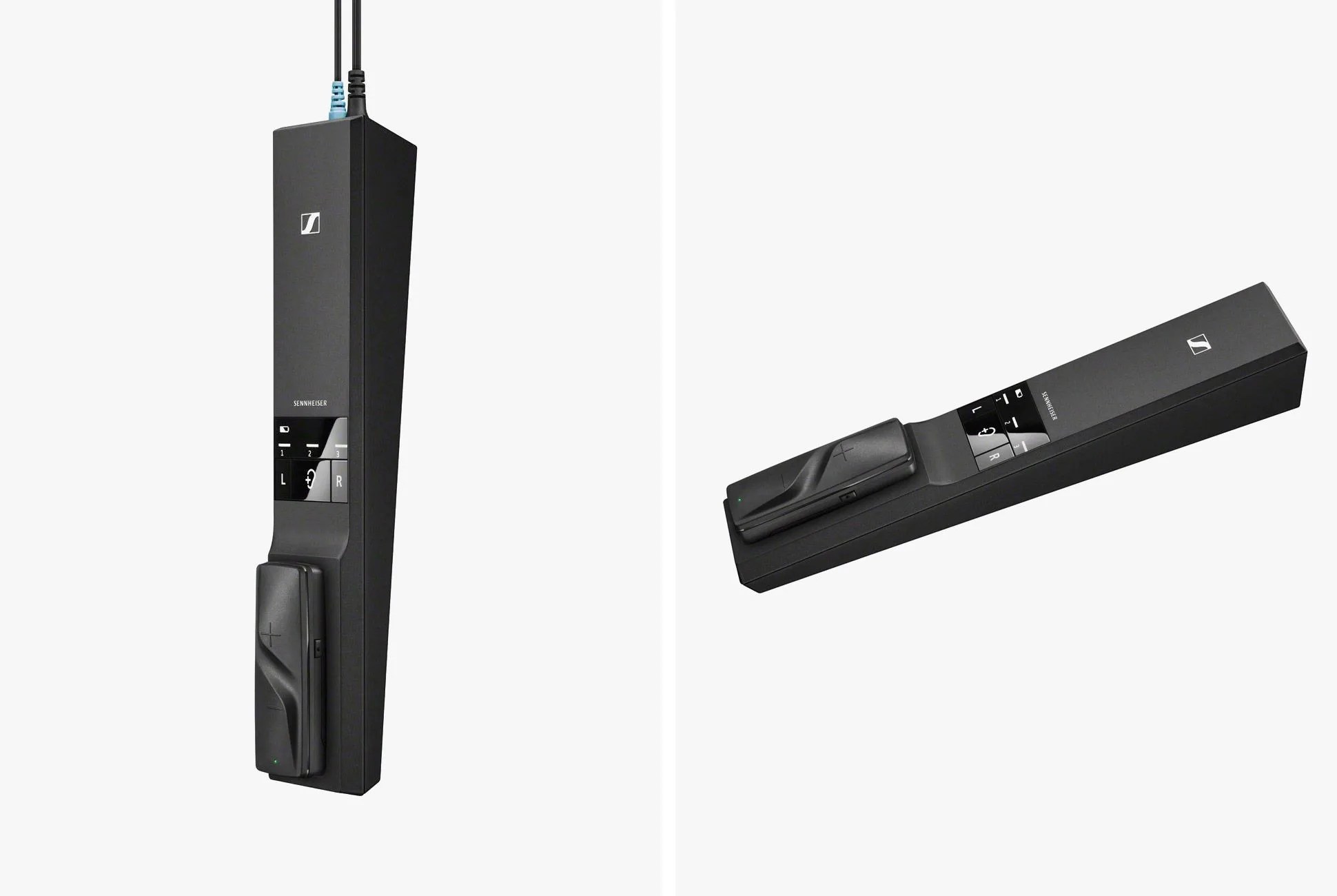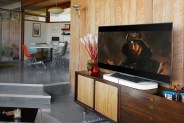Rigging up an audio system for your home theater — or even just getting decent sound from a 32-inch TV parked on a stack of bricks — has always been the great pain-in-the-ass of modern home technology. Sure, audiophiles may groove on the experience of choosing speakers, matching them to a receiver, and parsing out all the cable options (“the weakest link!”), and cinephiles can usually be lured into taking it seriously by the mere thought of wrapping their ears around the likes of these ten films they can watch over and over. But for most of us, it’s a confusing slog that can double the cost of your setup. Audiophobes, you know who you are.
Of course, you can stick with the toy-grade speaker embedded in your TV and pretend it’s fine, or you can buy a soundbar, the great plug-and-play option for noobs. Or, you can try headphones to bump up your audio quality if it’s just you enjoying the show. The fact is, just as great headphones offers a uniquely intimate and satisfying experience for music, so, too, can they for movies. But this has typically meant two options: a cabled hookup or wireless Bluetooth headphones. Neither is great. The former anchors you to the tube and virtually guarantees that the cable will knock over a drink sooner or later, and the latter, Bluetooth, has latency issues. The audio arrives out of sync with the video. Not okay.
German audio giant Sennheiser has offered solutions for wireless home-theater headphones before, but always linked to a system with dedicated headphones. The new Flex 5000 ($200), however, lets you plug in your own headphones, ceding control of that key quality decision to you. You can plug in any old earbuds — they include a modest pair of MX 475s ($35) in the package — or your favorite premium cans. I tried the system out with Sennheiser’s new HD569 around-ear headphones ($180).
At first the system seems a bit intimidating, with multiple cables and a long, sloping box that serves as the base station. But it all quickly starts to makes sense. You plug in the feed from the source into the base station via a standard 3.5mm jack or, ideally, the included optical cable. The clip-on receiver can be charged on the base station. You simply plug your headphones into that and you’re ready to go. You can adjust the volume via the receiver and also activate the Speech Intelligibility function, which tweaks the audio to enhance speech in films that might have challenging (noisy, muddled) soundtracks. The system also has three different hearing profiles, including one that’s unadulterated, and a 100-foot range for the receiver.
Though the most frequently touted benefit to using headphones while watching video is to keep your viewing from bothering others, there’s another benefit that’s even more compelling. I noticed it the moment I put the HD569s on and queued up Star Wars: A New Hope — one of my go-to movies for testing home theater systems, given my fanatical familiarity with it. It’s really a completely different kind of experience. Though a great surround system can certainly be absorbing, there’s something about having the audio source so close to your ears that changes the equation. It adds detail, nuance, layers. You hear R2-D2 click and whir more vividly, his feet thumping the desert floor in a panic about the approaching Tusken Raiders. You grasp the chatter of the Jawas more readily, and the background noise of the Death Star more vividly. It all adds up to a vastly more engaging experience, both with film and more casual viewing. I felt locked into the film as though in a tractor beam myself.
The latency, at less than 60 milliseconds, is essentially non-existent, thanks to Sennheiser’s CD-quality transmission. It’s seamless, making the system a pleasure to use overall. And by the way, the HD569s are an excellent match, with comfortable, lightweight cups that you won’t feel fatigued wearing for the two-hour duration of a movie. (They’re also excellent generally, for your straight audio listening, with clear, rich sound and very good noise isolation to help hush the overall acoustical environment.)
One final note: The Flex 5000 doesn’t actually block the audio feed to your system’s conventional speakers, so you’ll need to remember to mute that once you put on your headphones. Though that does open the possibility that you can have it both ways: Keep the audio on normally so others can listen while you sit there with the headphones on, enjoying the premium experience. If you want to be that guy, anyway — you know, the one smugly flying in the audio equivalent of business class while all the poor slobs around you suffer through tinny TV speakers back in coach.

